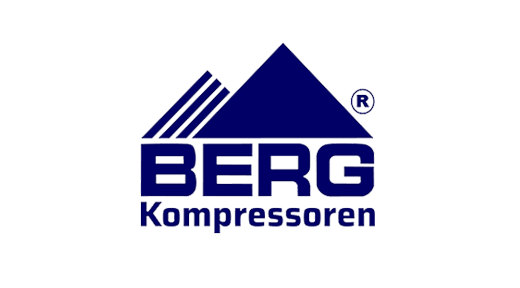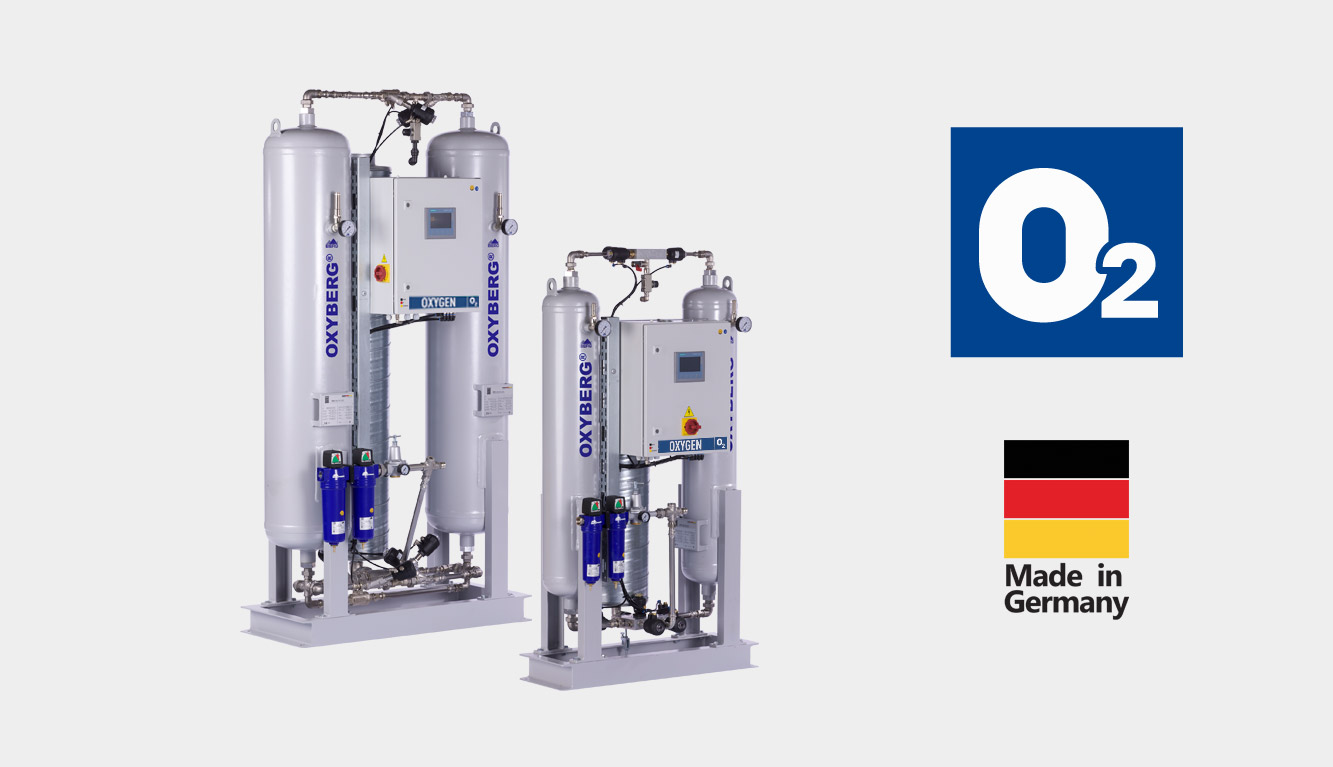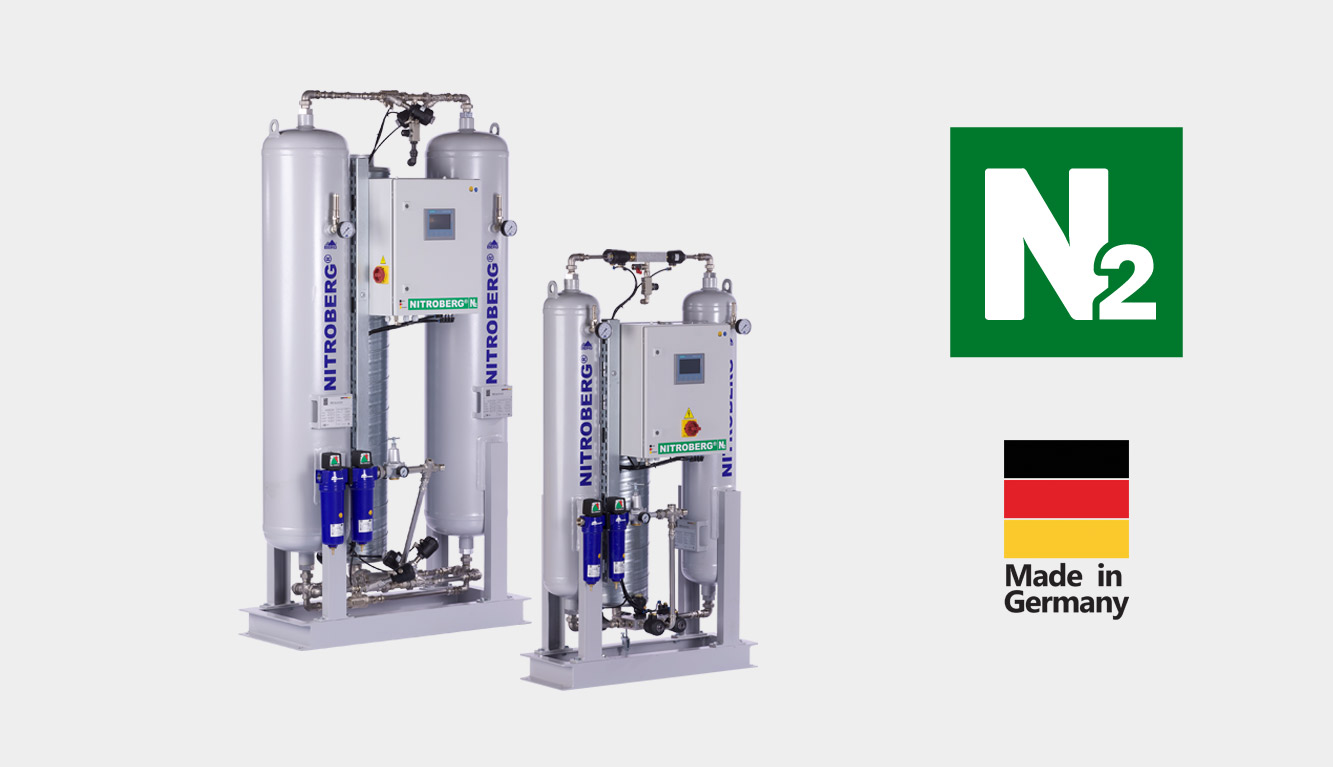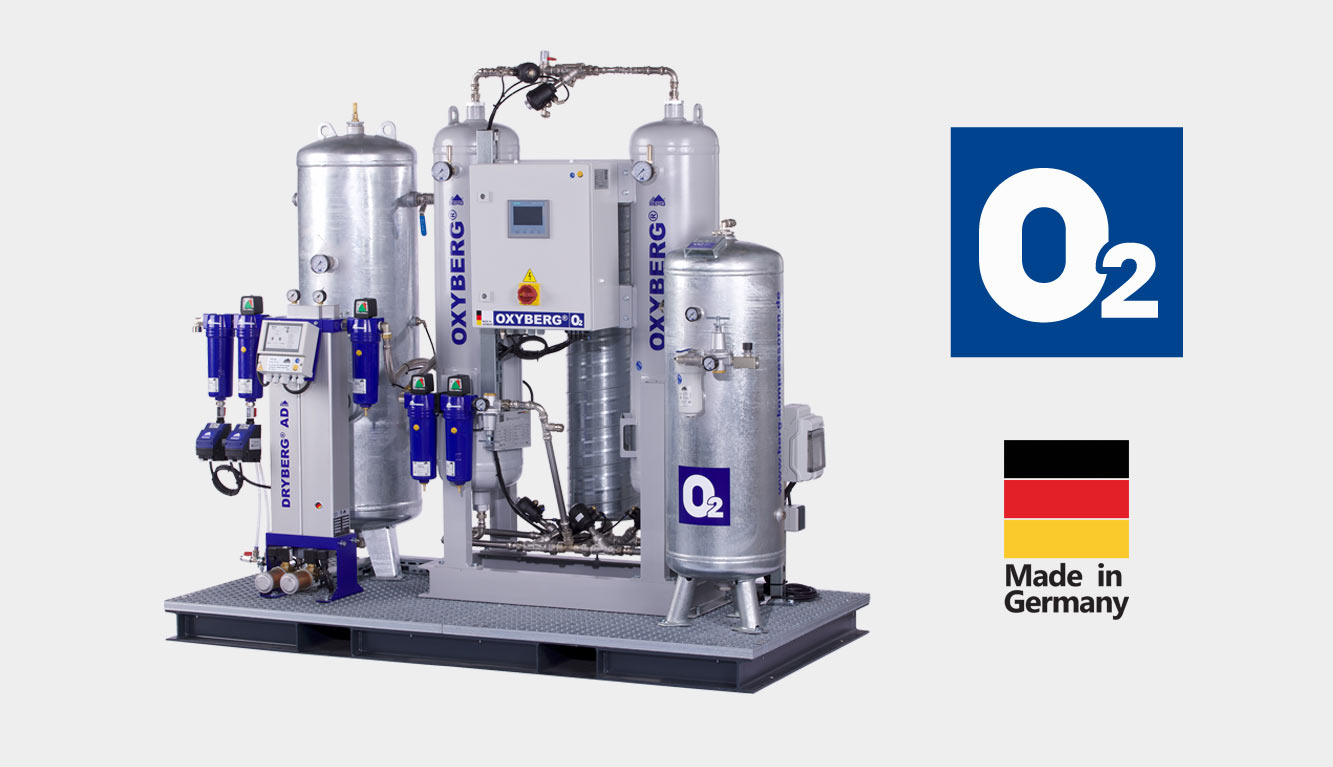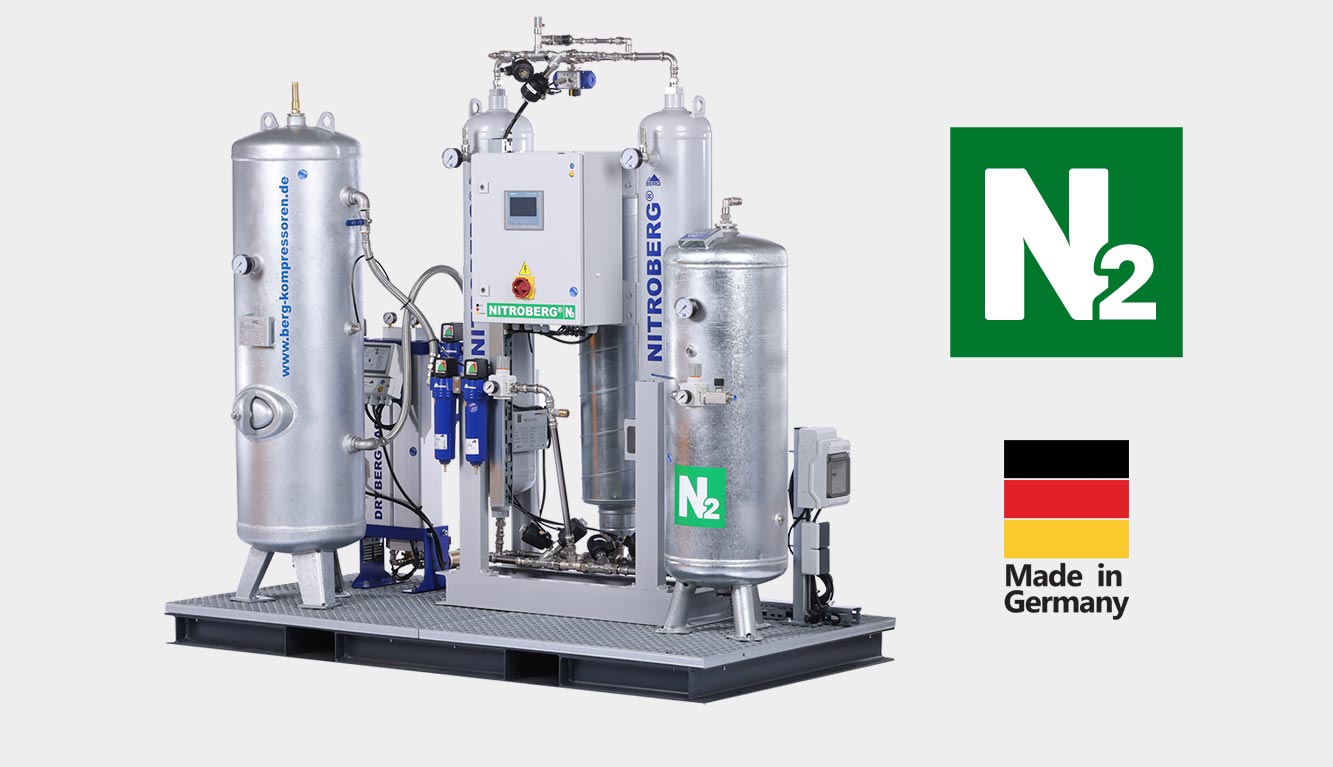NITROGEN, OXYGEN PLANTS
ON-SITE NITROGEN AND OXYGEN GENERATORS
All of our nitrogen and oxygen generators are manufactured exclusively by BERG GaseTech GmbH, Made in Germany. If you would like to have our gas generators, we can also offer you appropriate compressors, dryers, filters and pressure vessels at special prices. We are also very well known for plug and play skid mounted solutions.
NITROBERG®:Our PSA Nitrogen Generatorscan produce the purity of %97 to %99.999 with the Capacity of 1.4 - 1057 Nm3/h.OXYBERG®:Our PSA Oxygen Generatorscan produce the purity of %90 to %95 with the Capacity of 1.8 - 129 Nm3/h.The Complete oxygen plant, Skid mounted A) Compressed Air Station B) Air treatment to ISO 8573-1 Class 1.4.1 C) Compressed Air Buffer Tank D) PSA Oxygen Generator, OXYBERG®️ E) Product Oxygen Tank F) Boosting Station / Cylinder Filling Station |
The complete Nitrogen Plant, Skidmounted A) Compressed Air Station B) Air treatment to ISO 8573-1 Class 1.4.1 C) Compressed Air Buffer Tank D) PSA Nitrogen Generator, NITROBERG®️ E) Product Nitrogen Tank F) Boosting Station / Cylinder Filling Station |
The advantage of N2 and O2 PSA generator compared to other production methods:
- Pressure Swing Adsorption (PSA) technology for the production of nitrogen (N2) and oxygen (O2) gas offers several advantages over other production methods, particularly for on-site generation. Here are some of the key advantages of N2 and O2 PSA generators:
- On-Site Production: PSA generators produce nitrogen and oxygen gas directly at the location where it is needed. This eliminates the need for the transportation and storage of gas cylinders, reducing logistics costs and safety risks.
- Cost-Effective: PSA generators are cost-effective in the long run, especially when compared to the recurring expenses of purchasing and refilling gas cylinders. They offer a quick return on investment for many applications.
- Scalability: PSA generators are scalable and can be customized to meet specific gas purity and flow rate requirements. This flexibility is particularly valuable in industries where gas demand can vary.
- Energy Efficiency: PSA systems can be designed to minimize energy consumption. They use the difference in adsorption properties of gases to separate nitrogen and oxygen, which can be more energy-efficient than other separation methods like cryogenic distillation.
- High Purity: PSA generators can produce gases with high purity levels, making them suitable for a wide range of applications, including food packaging, electronics manufacturing, and medical uses.
- Reliability: PSA generators are known for their reliability and require minimal maintenance. They can operate continuously, providing a constant source of nitrogen or oxygen without interruptions.
- Environmental Benefits: On-site generation reduces the carbon footprint associated with gas transportation and minimizes greenhouse gas emissions. It is a more environmentally friendly option.
- Safety: The use of gas cylinders can pose safety risks, including handling and storage issues. On-site PSA generators reduce these risks and improve workplace safety.
- Convenience: On-site generation offers convenience by ensuring a continuous supply of gas. It eliminates the need to order, store, and handle gas cylinders, reducing administrative overhead. 11. Customization: PSA systems can be tailored to meet specific application requirements, making them suitable for various industries, from healthcare to manufacturing to food and beverage.
We offer customer-specific solutions for a range of N2 and O2 applications as part of their N2 and O2 to meet the needs of customers of all sizes.
Made in Germany, BERG GaseTech GmbH
